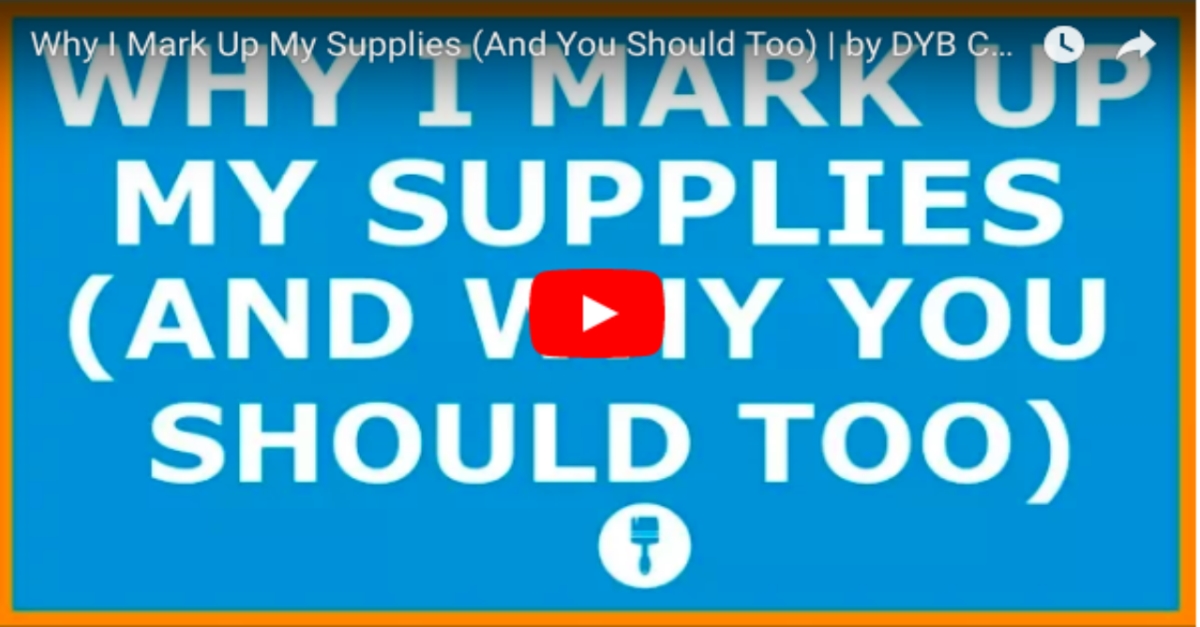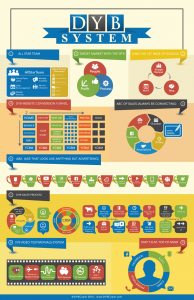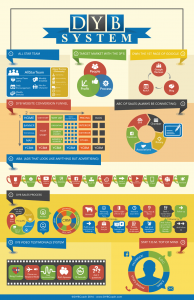
Why I Mark Up My Supplies (And You Should Too)
Imagine being able to take your family to Disney World.
Imagine being able to buy a new truck.
Imagine having your own shop!
Maybe you’d like to have all of these things…
… but the money is just not there…
Years ago I was in your shoes.
Then it hit me!
I’m Ron Ramsden, I’m a DYB Coach, and a painting contractor in Massachusetts.
You say you don’t have enough money, but there are a few things you can change that will put you on the right track.
You’d finally be able to take your family to Disney World and to do whatever you want with the extra money.
What I’m talking about is actually marking up the product.
I am shocked at how many painters are out there, who don’t mark up!
They pass the savings of their gallons of paint, and any other supply that they have, to their customer.
When was the last time you went to a mechanic to have your brakes done?
You know that the actual brakes, at an auto store, cost you around $30-$40.
Is the mechanic charging you $40?
No way, Jose!
They charge you $80, $90 or $100 dollars for those brakes.
You’re probably thinking that a customer is not going to pay such price.
If they don’t, then they’re the wrong customers for you, because customers will always pay the markup.
They buy new vehicles and they pay the dealer markup.
They go to the grocery store and they’re paying a markup.
They’re not asking them to buy all their products at the same cost.
You should also be marking up your product, and here’s why…
What happens if there’s a mistake?
What If you bought multiple gallons of paint at the paint store and they forget to shake them or they didn’t shake them enough,
you’re going to make a stop back there.
What happens if you need another gallon of paint in the middle of a job, you are going to have to come to the store again.
All of these are the reasons why you should be marking up your product.
Your buying power, experience, and the relationship, with the paint stores or any other store that you’re purchasing at, earns you a discount.
This is your job and they are giving you a discount.
This is what you’ve earned to keep in your pocket.
I’m going to show you some scenarios of marking up and how this could actually pay for your next trip to Disney World.
If you are a one-man show making $100,000 a year…
I’m just taking roundabout numbers, you could be earning higher, or lower.
This is just to simplify the math that we’re going to do here.
On an industry average, the amount of supplies you buy for a paint project is about 15% a year, per job.
I’m not talking about trim repair or anything like that, just the average paint.
We’re going to use one-man show scenario and hence over the course of the year, you are going to spend about $15,000 on supplies.
Now start with the markup.
If you’re marking up your product 20% then:
$15,000 x 20% will put an extra $3000 in your pocket!
Three thousand dollars can do a lot, especially when you didn’t have it before.
Let’s look at some of the other scenarios.
If you’re earning $300,000 a year then the supplies would cost you $45,000, which is 15% of your earnings.
If you mark that up by 20% then:
$45,000 x 20% would give you $9000!
Nine thousand dollars is probably a great use then.
If you’re driving to Disney maybe that’ll get you through the door.
Let’s consider another scenario…
If you are making $500,000 a year because you have four or five guys working for you, you have now purchased $75,000 worth of supplies this year, which is 15% of what you earn.
$75,000 x 20% will give you $15,000!
This would be your markup over the course of the year.
I know you could probably rent a small shop for $15,000 or you could go to Disney World and even take one of the Disney cruises.
You could also fund the money for your retirement.
If you’re over 50 years old that could fund your simple Individual Retirement Account (IRA).
I know this for a fact that $15,500 is a simple IRA.
Let’s look at some of the other markups that could actually happen and this is not passing your savings over to the customer.
This is actually charging them either retail price or actually marking up for your time.
Let’s just consider a sale.
You go into one of the bigger stores; the Benjamin Moore, the Sherwin Williams or any other store you purchase your supplies from.
You buy rolls of plastic for about $12.
You mark them up, 20%, and you make $2.40 on that one roll of plastic.
This markup is for your time, the convenience of having it in the truck, this is why you’re charging the customers extra.
In another case, If you actually bought an entire case of plastic, they’ll give you a discount for purchasing in bulk.
Let’s say that now you gave $9 a roll for a piece of plastic.
I know that sounds a little silly to some of you.
Let’s look at the markup.
You want to charge $2.40 as a markup on one roll.
On the other hand, you’re saving an additional $3 on a roll because you bought one roll for $9 instead of $12.
You’ve just made $5.40 ($3+$2.40) on that one roll of plastic.
You start adding these things up over the course of the year of actually marking up your product.
You’re going to be shocked at how much money you’ll make.
That money will fund that sprayer you have your eye on.
You’ll be looking at a new truck in two years.
These are all kinds of things you can do by just marking up the product.
It’s understandable that sometimes you go to the job and there’s already 2 or 3 gallons of paint sitting there and the homeowner needs you to use this.
Sometimes the homeowners will say they want to purchase the product.
You can’t let them do that.
You can tell them, “that’s how we warranty our work, we will only warranty if we purchase the product.”
Depending on your estimate you can line-item your products or you can just put it on labor and material.
You should list every piece of product you’re going to use for a supply.
You must list how many gallons of paint, how many rolls of plastics, how many rolls of tape will be used.
You should also list sandpapers, rollers, sundries, etc, to let them know how much product actually goes inside every project you do.
I hope this helps you with the marking up and I hope you’ll explore marking up products on your next estimate.
Try it and you’d be surprised that most homeowners are fine with that and if they’re not, maybe they’re not the homeowners that you want to work for.
If you have any questions you can contact me at ron@dybcoach.com
You can also find me on Facebook, I’d love to chat with you and then we could also have a phone call if need be.
I’m Ron Ramsden, I’m a DYB coach, also a painting contractor helping contractors get out of the bucket and make some money.
Have a great day and mark it up!


